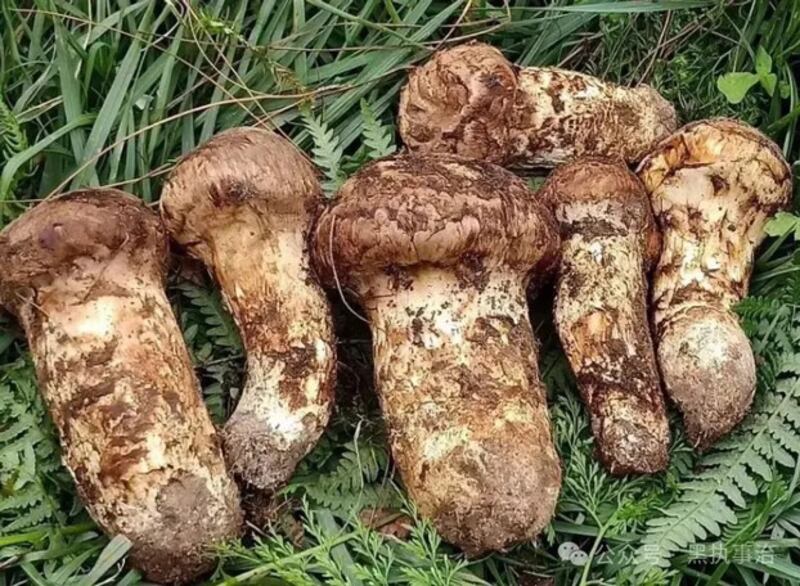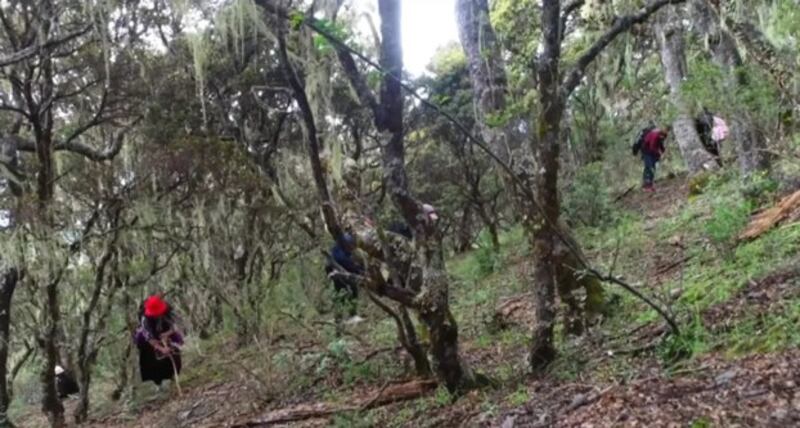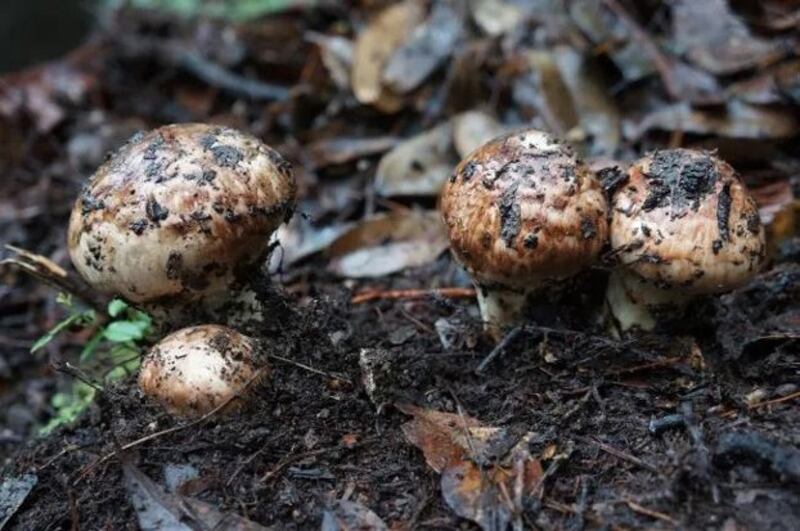A recent wildfire in a Tibetan-populated area of China’s Sichuan province ravaged vast swathes of forests covered with pine and oak trees that nurtured a hidden treasure and an economic lifeline for residents — matsutake mushrooms.
The wildfire that broke out in March in Nyagchu county, or Yajiang in Chinese, in Kardze Tibetan Autonomous Prefecture, forced 3,000 people from the traditional Kham region of Tibet to evacuate the area and burned down several houses. No human casualties have been reported.
But the fire destroyed about one-sixth of the county’s matsutake output, Chen Wen, director of the Yajiang Matsutake Industrial Park, told Chinese media.
The mushrooms, which Tibetans gather to supplement their income and others use in dishes in Japan, South Korea and China, may not grow again in the burned area for at least 20 years, he said.

China is the world's largest producer and exporter of matsutake mushrooms, exporting US$30.3 million in 2022, while Japan is the top importer, bringing in US$24.7 million that year.
The primary places where the mushrooms grow in China are within the Tibetan plateau, including in Nyagchu county, which accounted for more than 12% of China’s annual output, according to the Yajiang County Agriculture and Animal Husbandry Science and Technology Bureau.
Demanding and lucrative
Many families in Nyagchu — where Tibetans make up the majority of the county's population of over 51,000 — have for years braved the frigid mountain air to forage for the elusive mushrooms during the traditional harvest season between July and September.
Foraging matsutake is a demanding if lucrative job with harvesters often spending weeks at high altitudes in harsh weather conditions to search for the mushrooms, said an area resident. Some varieties are rare and require meticulous searching, while others grow underground and require careful removal, he said.
“In one day, you can make more than 2,000 yuan (US$300) during the harvesting season,” said a source inside Tibet who requested anonymity for fear of reprisal.

Residents believe that the impact of the fire may force some Tibetans to abandon matsutake harvesting and seek alternative sources of income in other areas.
But at a recent press conference on the impact of the wildfire, Sichuan provincial representatives did not mention the disaster’s potential effects on the livelihoods of Tibetans who rely on matsutake harvesting.
The fire also damaged the local ecosystem, killing birds and insects that play a role in the growth of the mushrooms, said an area resident, adding that the long-term ecological consequences of the blaze remain unclear.
“Nyagchu is renowned for its abundance of naturally grown matsutake, and the harvest is a crucial source of income for many Tibetan families in the county,” said Washington-based Tsering Palden, a native of Nyagchu, who has sold the mushrooms in the past.
Palden estimates that area households earn about 200,000 yuan (US$28,000) annually from selling the mushrooms.
‘Oak mushrooms’
In Tibet, matsutake mushrooms are most commonly referred to as "oak mushrooms," or beshing shamo and besha for short in Tibetan, in a nod to their symbiotic relationship with evergreen oak trees in Tibet.

In his 2022 book "What a Mushroom Lives for: Matsutake and the Worlds They Make," Michael Hathaway, professor of anthropology at Simon Fraser University in Vancouver, Canada, describes how Tibetan villagers in Yunan province hunt for them.
The villagers gather the mushrooms in the morning and return home when dealers arrive at a market or drive along the roads, buying them as they go, he writes. The dealers then sell their matsutake to other dealers, who arrange for them to be shipped across China and to Japan and South Korea.
The price of matsutake mushrooms had jumped over the past 40 years from the equivalent of about US$1 per pound (2.2 kg) in 1985 to US$70 per pound, according to Beijing-based Tibetan writer and poet Tsering Woeser.
The mushrooms have specific environmental requirements for growth and thrive in undisturbed, high-altitude forests with the right balance of sunlight and moisture, said the source inside Tibet.
“The fire has disrupted these conditions and may take years for the ecosystem to recover sufficiently to support matsutake growth,” he added.
Translated and edited by Tenzin Pema for RFA Tibetan. Edited by Roseanne Gerin and Malcolm Foster.
